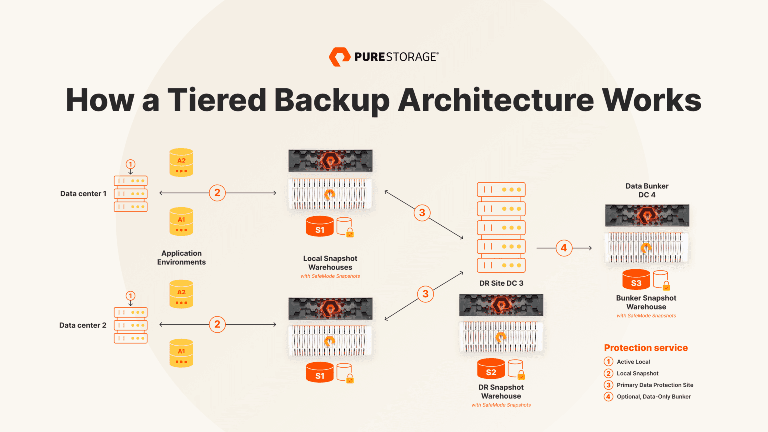Tier 0: Mission-critical Data
Tier 0 in data storage tiering refers to the highest and fastest tier, designated for mission-critical data that demands an extremely high-performance and low-latency data storage solution. This tier is crucial for applications and operations where any delay or downtime could lead to significant financial losses, reputation damage, or operational disruptions. Tier 0 storage should be used judiciously because of the cost.
Examples of Tier 0 data: Real-time financial transactions, online gaming data that requires instant access, and database systems for critical applications like those used for infrastructure and emergency services.
Types of storage media used in Tier 0 storage: Frequently accessed data should be readily available on high-performance storage such as non-volatile memory express solid-state drives (NVMe SSDs), in-memory databases, and custom hardware accelerators.
Tier 1: Hot Data
Hot data refers to the most frequently accessed data, which requires scalable, high-performance storage for quick access. This data class is stored on the fastest storage media, such as SSDs, ensuring rapid retrieval and response times.
Examples of Tier 1 data: Transactional databases, frequently accessed customer records, and current project files
Types of storage media used in Tier 1 storage: SSDs, in-memory databases, and high-speed storage arrays
Tier 2: Warm Data
Warm data is important but not accessed as frequently as hot data. It’s stored on storage media that offers a balance between performance and cost, such as a combination of SSDs and traditional HDDs.
Examples of Tier 2 data: Monthly reports, historical sales data, and regularly accessed archives
Types of storage media used in Tier 2 storage: Hybrid storage arrays combining SSDs with traditional HDDs
Tier 3: Cold Data
Cold data comprises less frequently accessed information that still holds value but doesn't require high-speed access. Cold data is stored on slower and more cost-effective storage solutions, such as low-cost HDDs or cloud storage. This data class prioritizes cost efficiency over performance.
Examples of Tier 3 data: Older project files, archival documents, and historical records
Types of storage media used in Tier 3 storage: HDDs, cloud storage, and tape storage
Archive Data
Archive data consists of data that is retained for compliance or long-term storage purposes—sometimes in a data bunker. It’s often moved to the most cost-effective and scalable storage options, like tape storage or deep archival cloud services. It’s the least frequently accessed information that organizations are legally or operationally obligated to retain for the long term.
Examples of archive data: Regulatory compliance documents and historical records for compliance purposes
Types of storage media used for archive data: Tape storage, optical storage, and cloud-based archival solutions
What Are the Benefits of Tiered Storage?
The primary benefits of tiered storage are:
1. Cost-effectiveness
Tiered storage allows organizations to optimize costs by allocating high-performance resources only to data that requires it, while less frequently accessed data can be stored on more cost-effective media.
2. Performance optimization
By tailoring storage solutions to specific data requirements, tiered storage ensures that high-performance resources are reserved for critical applications, improving overall system efficiency.
3. Scalability
As data grows, tiered storage systems can easily scale by adding the appropriate storage media for each tier, providing a flexible and scalable solution for evolving data requirements.
Tiering vs. Caching
The terms "tiering" and "caching" are sometimes used interchangeably, causing confusion. However, they refer to distinct concepts in data storage.
Tiering involves physically moving data between different storage tiers based on access patterns. Data is permanently relocated to a different storage medium.
Caching uses a temporary storage area to store frequently accessed data, improving performance by reducing the need to fetch data from slower, primary storage.
Conclusion
Tiered data storage is a strategic approach to managing data efficiently based on its usage patterns. By categorizing data into different tiers and utilizing appropriate storage media, organizations can achieve a balance between performance, cost, and scalability.
For those looking to take data storage to the next level, the era of the all-flash data center has arrived. Embracing an all-flash storage infrastructure ensures efficient, cost-effective, lightning-fast performance across all tiers.
Learn more about the benefits and implementation of all-flash data storage.




